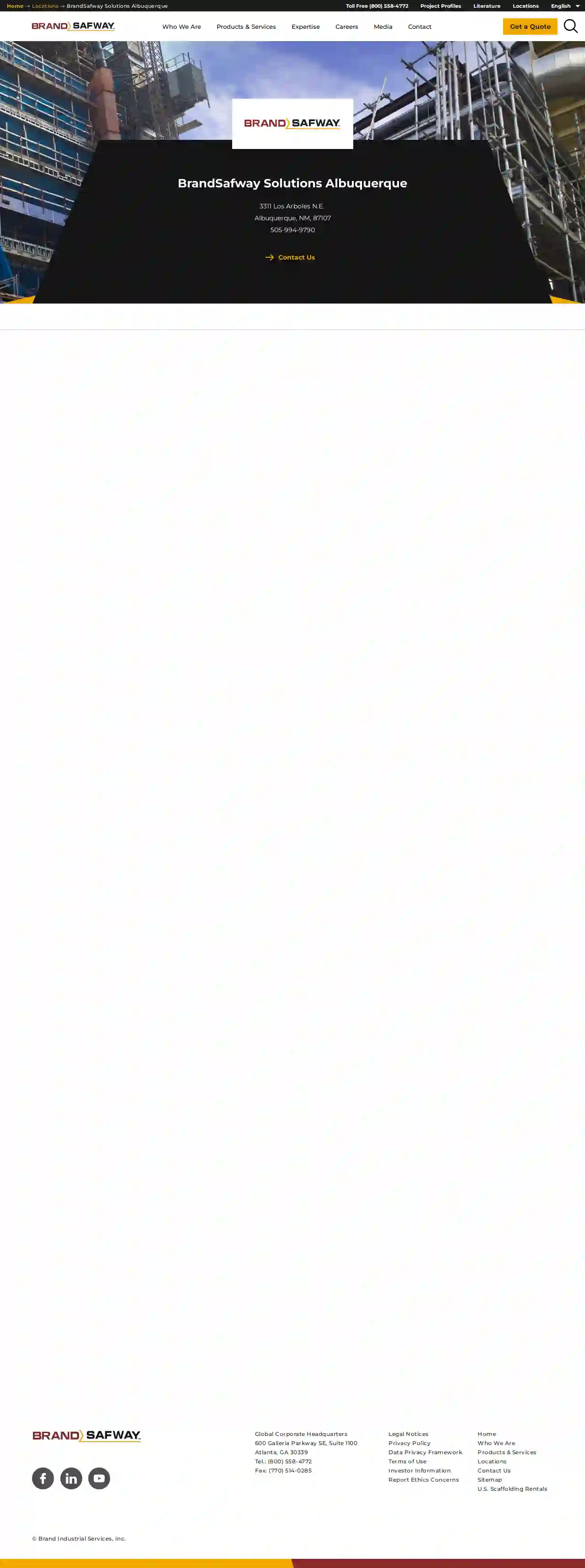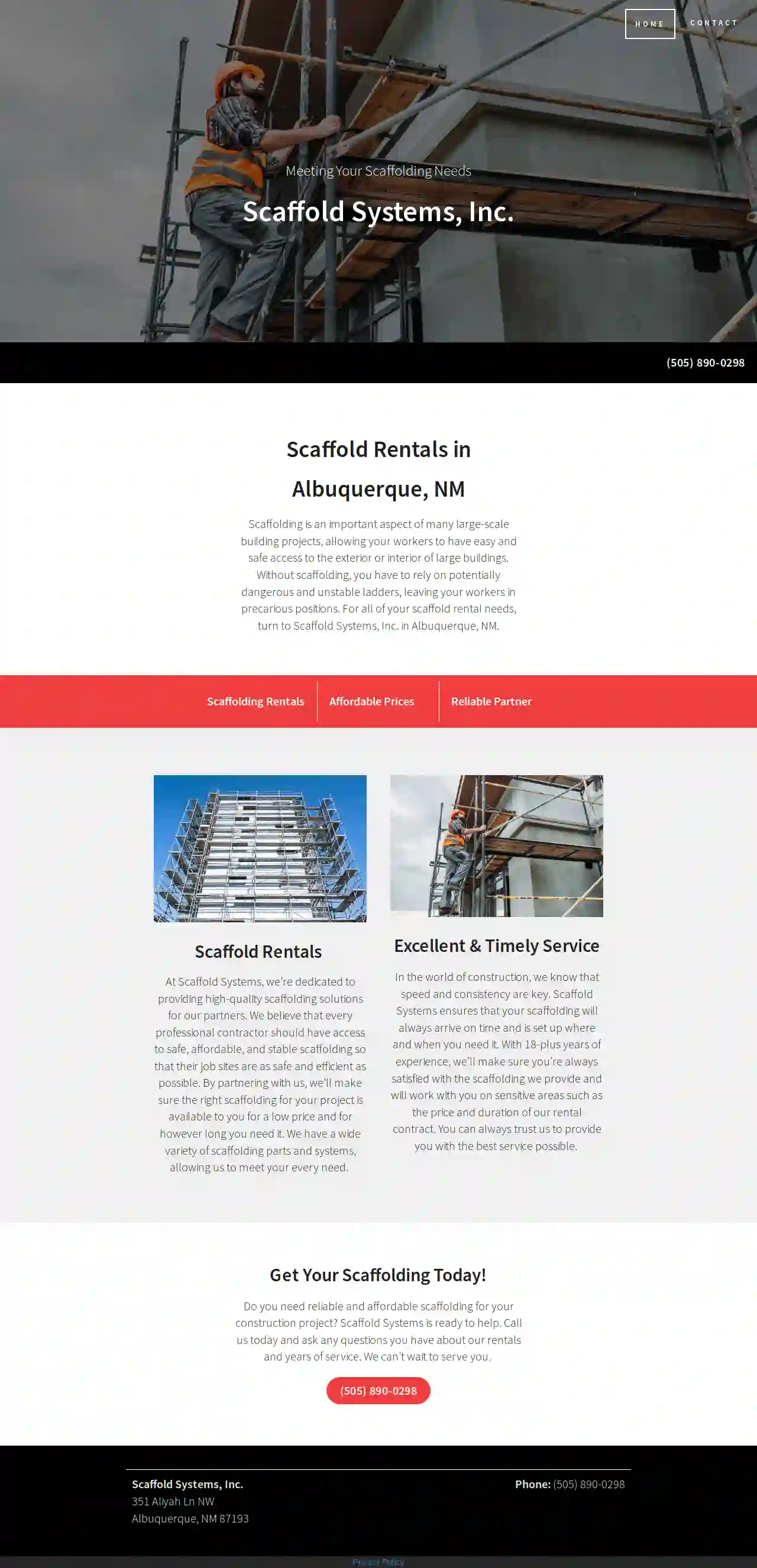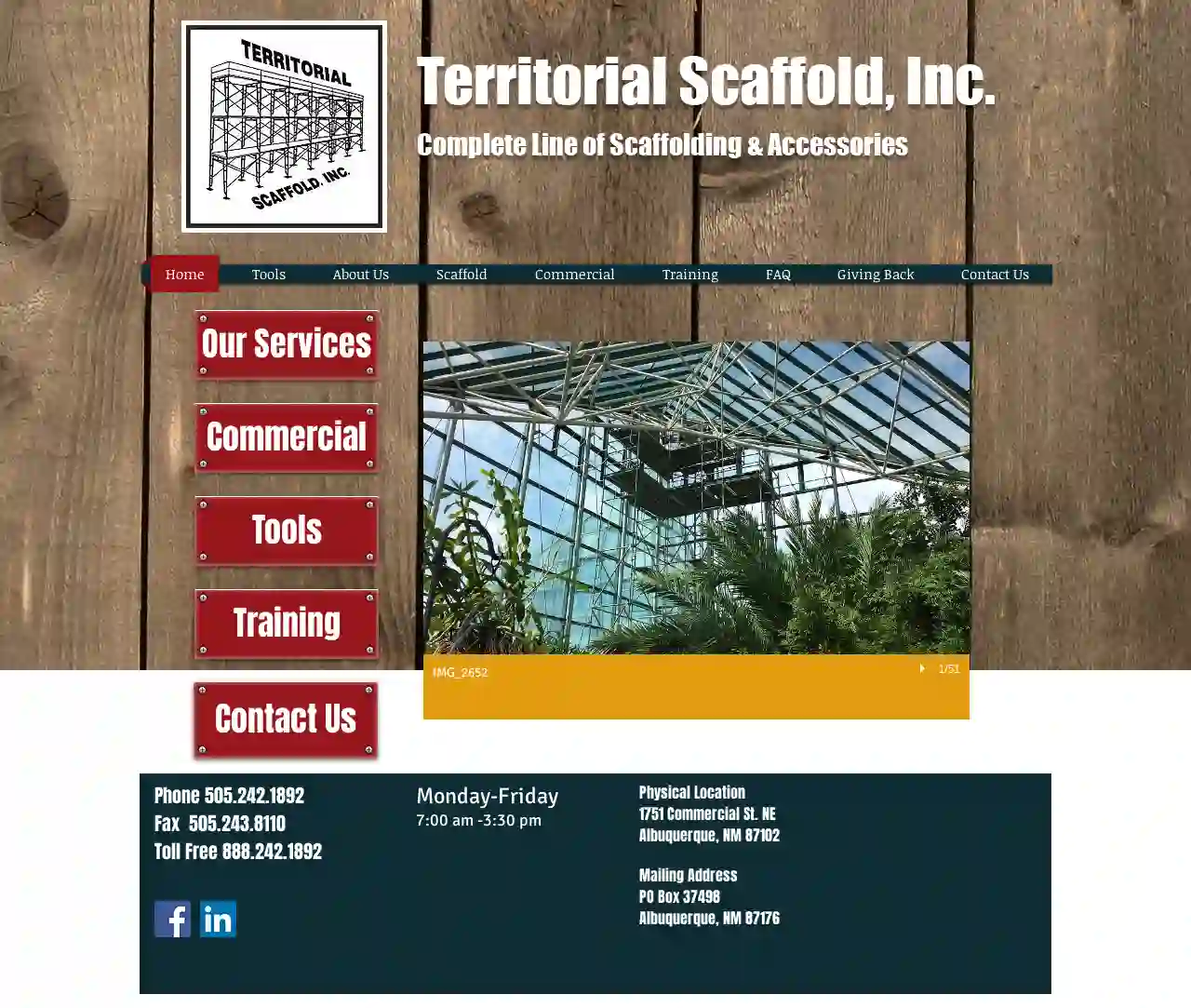Scaffolding Companies Taos
Top Scaffolding Erectors in Taos
Get up to 3 Scaffold Services quotes for your project today! Compare profiles, reviews, accreditations, portfolio, etc... and choose the best offer.

BrandSafway Solutions Albuquerque
4.18 reviews1234 BrandSafway Blvd, Albuquerque, 87102, USBrandSafway is a leading provider of access solutions, including scaffolding, aerial work platforms, and forming and shoring equipment. With a strong commitment to safety, quality, and customer satisfaction, BrandSafway offers a wide range of services tailored to meet the unique needs of clients across various industries. Their team of experienced professionals works closely with clients to understand their requirements and deliver customized solutions that enhance efficiency and productivity. BrandSafway's mission is to provide innovative access solutions that ensure safe and efficient project execution, while maintaining a focus on sustainability and environmental responsibility.
- Services
- Why Us?
- Accreditations
- Our Team
- Testimonials
Get Quote
Scaffold Systems Inc
36 reviews351 Aliyah Ln NW, Albuquerque, 87193, USScaffold Systems, Inc. is a dedicated provider of affordable and convenient scaffolding rentals to contractors and homeowners in Albuquerque, NM. With nearly two decades of experience, they offer a wide variety of scaffolding parts and systems to meet every need. Their commitment to safety, efficiency, and customer satisfaction sets them apart as a reliable partner for construction projects.
- Services
- Why Us?
- Gallery
Get Quote
Territorial Scaffold Inc
4.725 reviewsTerritorial Scaffold, Inc., Albuquerque, NM, 1751 Commercial St. NE, 87102, USTerritorial Scaffold, Inc. is a leading provider of scaffolding and accessories, offering a comprehensive range of services including commercial scaffolding, training, and more. With a strong commitment to quality and customer satisfaction, the company operates from its physical location at 1751 Commercial St. NE, Albuquerque, NM 87102, and can be contacted via phone at 505.242.1892, fax at 505.243.8110, or toll-free at 888.242.1892. The business is open Monday through Friday from 7:00 am to 3:30 pm.
- Services
- Why Us?
- Accreditations
- Our Team
- Testimonials
- Gallery
Get Quote- Al
All American Scaffold & Shoring
11 reviewsAlbuquerque, US- Services
- Why Us?
Get Quote
Over 2,353+ Scaffolding Companies on our directory
Our scaffolding experts operate in Taos and surrounding areas!
ScaffoldingHQ has curated and vetted the Best Scaffolding Companies in Taos. Find a top & reliable pro today.
Frequently Asked Questions About Scaffolding Companies
- Project Size and Complexity: The height, configuration, and accessibility of the scaffolding will influence the amount of materials and labor required.
- Scaffolding Type: Different scaffolding systems (tube and clamp, system scaffolding, suspended scaffolding) have varying costs.
- Duration of Rental: The length of time you need the scaffolding will affect the overall rental price.
- Location: Labor costs and material availability can differ based on your location.
- Additional Services: Some companies may offer additional services like erection, dismantling, or transportation, which can add to the cost.
- Stability and Level: The scaffolding is level and firmly supported by a solid foundation.
- Secure Connections: All components (tubes, clamps, fittings) are properly connected and tightened.
- Guardrails and Toeboards: Adequate guardrails and toeboards are in place to prevent falls.
- Platforms and Decking: Platforms are secure, free from damage, and provide adequate working space.
- Access and Egress: Safe access and exit points are available (ladders, stairs).
- Weather Protection: Appropriate measures are in place to protect workers from adverse weather conditions (e.g., wind screens, covers).
- Clearance from Hazards: The scaffolding is a safe distance from power lines, trees, or other potential hazards.
- Scaffolding Tag: The scaffolding tag is up-to-date and displays the last inspection date, maximum load capacity, and any restrictions.
- Steel: The most common material due to its strength, durability, and resistance to corrosion.
- Aluminum: Lighter than steel, often used for smaller projects or where weight is a concern.
- Timber: Used for decking platforms and some traditional scaffolding structures. It's less common now due to its susceptibility to rot and damage.
- Fiberglass: Used in specialized applications where electrical conductivity is a concern.
How much does scaffolding cost to rent in the USA?
Can I erect scaffolding myself?
What should I look for during a scaffolding inspection?
What are some common materials used in scaffolding?
How much does scaffolding cost to hire in the USA?
- Project Size and Complexity: The height, configuration, and accessibility of the scaffolding will influence the amount of materials and labor required.
- Scaffolding Type: Different scaffolding systems (tube and clamp, system scaffolding, suspended scaffolding) have varying costs.
- Duration of Rental: The length of time you need the scaffolding will affect the overall rental price.
- Location: Labor costs and material availability can differ based on your location.
- Additional Services: Some companies may offer additional services like erection, dismantling, or transportation, which can add to the cost.
Can I erect scaffolding myself?
What should I look for during a scaffolding inspection?
- Stability and Level: The scaffolding is level and firmly supported by a solid foundation.
- Secure Connections: All components (tubes, clamps, fittings) are properly connected and tightened.
- Guardrails and Toeboards: Adequate guardrails and toeboards are in place to prevent falls.
- Platforms and Decking: Platforms are secure, free from damage, and provide adequate working space.
- Access and Egress: Safe access and exit points are available (ladders, stairs).
- Weather Protection: Appropriate measures are in place to protect workers from adverse weather conditions (e.g., wind screens, covers).
- Clearance from Hazards: The scaffolding is a safe distance from power lines, trees, or other potential hazards.
- Scaffolding Tag: The scaffolding tag is up-to-date and displays the last inspection date, maximum load capacity, and any restrictions.
What are some common materials used in scaffolding?
- Steel: The most common material due to its strength, durability, and resistance to corrosion.
- Aluminum: Lighter than steel, often used for smaller projects or where weight is a concern.
- Timber: Used for decking platforms and some traditional scaffolding structures. It's less common now due to its susceptibility to rot and damage.
- Fiberglass: Used in specialized applications where electrical conductivity is a concern.